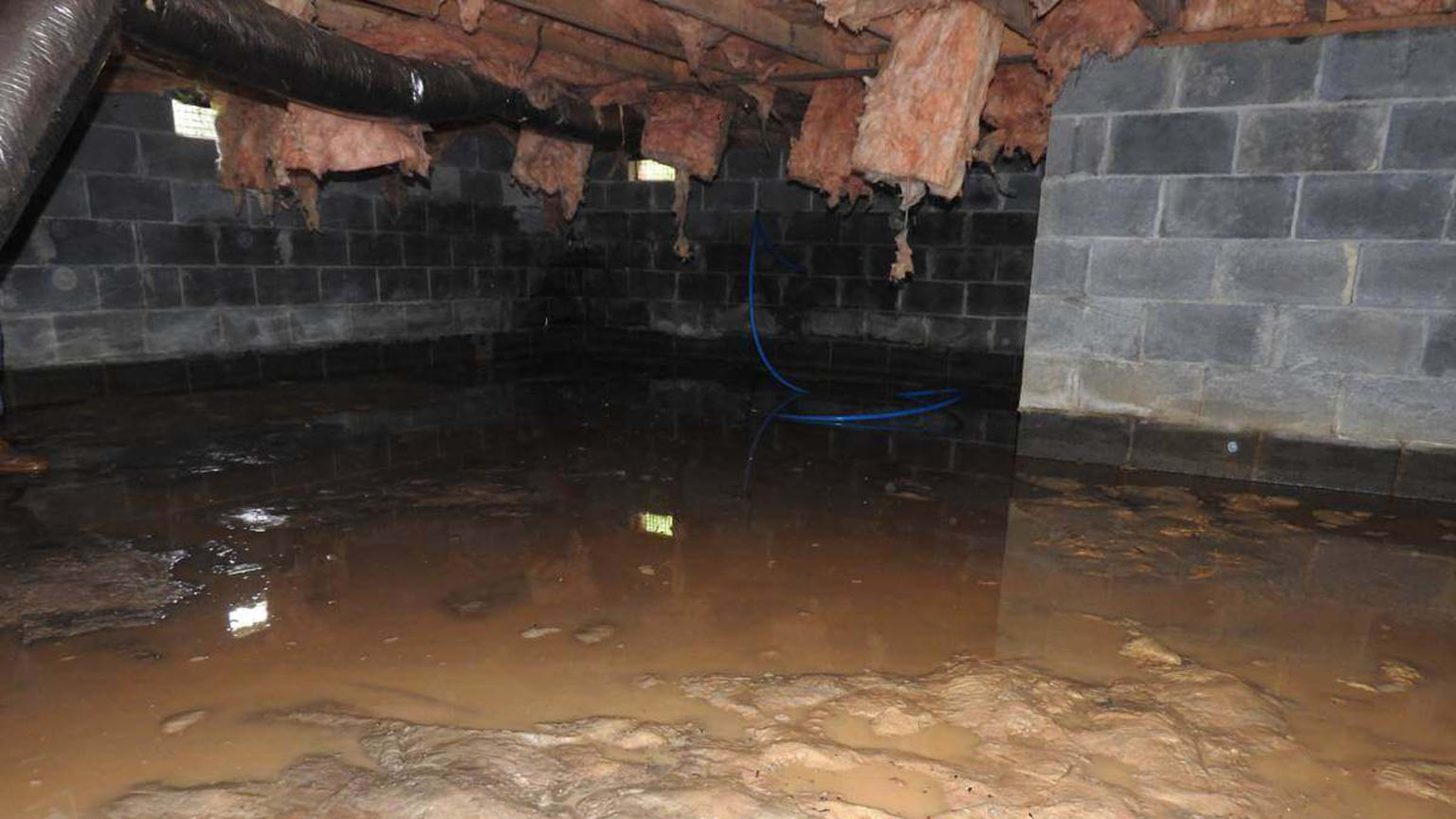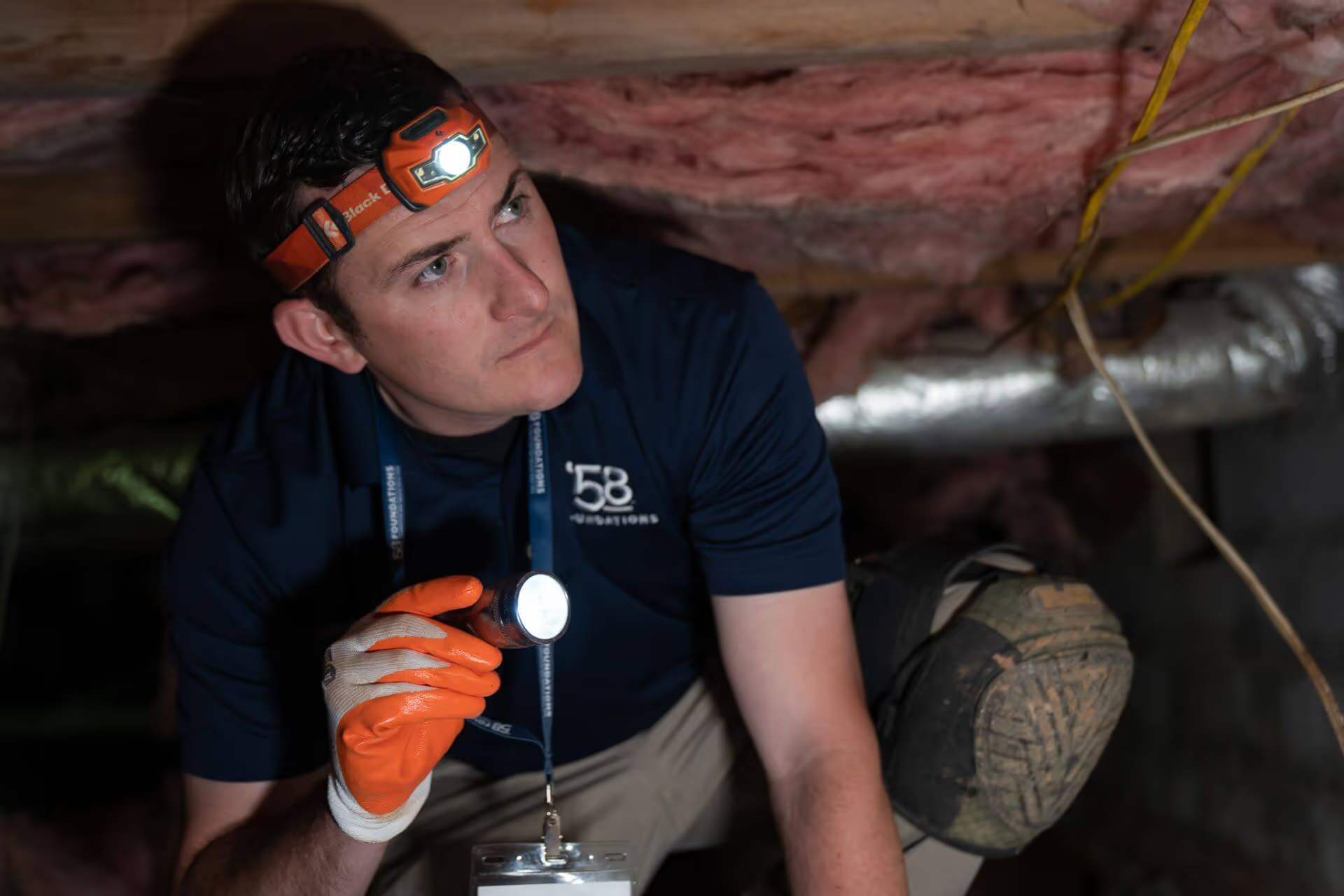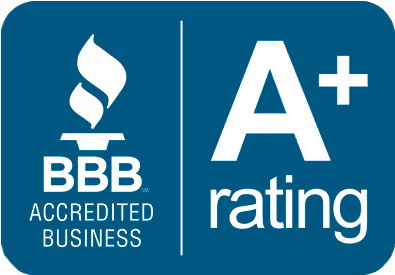
Whenever you think of humidity, you can feel the mugginess and stickiness in the air. Your home is sure to feel it as well, almost as if it’s getting soggy. Fortunately, we have air conditioners and dehumidifiers to help. However, your crawl space remains unprotected. If humidity is allowed to sit in your crawl space, it can lead to a disastrous situation in your home.
Let’s take a dive into what humidity has to do with your crawl space and how you can prevent damage to your home!
During a humid summer, the air all around you becomes more than just hot, it’s highly saturated with airborne moisture. That’s why it can feel so muggy and humid outside. But even if you’re in your living room cooling off with a fan spinning and the air conditioning on, your crawl space is a different story.
Crawl spaces are typically designed to be vented in order to stay dry. But when your climate is hot and humid, there’s no way for the crawl space to air itself out because the air going in is as moist as the air going out. The result? A humid crawl space becomes damp, and that’s when the problems start to arise.
Water can come in three forms: solid, liquid, and gas. Just as you wouldn’t want a water leak in your crawl
space, such as from leaky plumbing or groundwater through a foundation crack, you shouldn’t want very humid air to enter your crawl space either. Humid air getting into your crawl space can still contribute to the overall levels of moisture in your crawl space. When there is excess moisture in a crawl space, it can bring about a variety of problems to the crawl space.
As moisture builds and lingers in your crawl space, eventually the moisture levels will reach a point that mold spores present in your crawl space will begin to activate and grow. As that mold grows and colonizes, it can not only affect the concrete and wooden structures that they may grow on, but the mold spores they release can become a potential hazard for you and your loved ones. Mold spores are known to agitate respiratory illnesses and asthma symptoms, especially for those with allergies to mold.
Why would mold spores in the crawl space be a problem for you if you spend your time above? This is because of how the air in your crawl space has a direct effect on your home’s living spaces. Due to the differences in air pressure, the air within your crawl space is continually sucked upwards into your home’s living spaces. This is known as the “stack effect”. As the stack effect takes place, mold spores and the humid air within your crawl space is moved up and throughout the rest of your home. This will do more than trigger allergic reactions and asthma symptoms, however. Just as the mold in your crawl space required that humidity and moisture, the mold spores that spread throughout your home will be getting that same humid crawl space air to repeat the process.
You might be wondering how you could possibly get rid of all mold in your home. But as the EPA states it, “there is no practical way to eliminate all mold and mold spores in the indoor environment; the way to control indoor mold growth is to control moisture.”
Wood rot is the name for a group of fungal species that grow on wet or moist wood to begin the process of rot and decay. In nature, they play a key role in the cycle of life, returning dead trees back to the soil. But in your crawl space? It can mean rotting crawl space floor joists, which can lead to sagging or bouncy floors. It can also wreak havoc with any other wooden support structures that may be in your crawl space, which can eventually compromise the structural integrity of your home.
Water is vital to many things living on our planet. Many living creatures also require shelter, whether it’s to nest, be safe from the elements, or to evade predators. Unfortunately, that makes a humid crawl space perfect for many pests. Let’s take a look at some of the pests that may be drawn to your crawl space because of that excess moisture…
Mice and rats are always looking for a safe place to hide from predators while they forage and breed. Houses have long been a preferred breeding ground because of the lack of natural predators and the potential to find plenty of food resources. But they also require a source of water. A humid crawl space can fulfill a rodent pest’s needs, encouraging them to stay, forage, and breed. The danger comes from what the rodents may bring with them into your home. Their urine and feces may contain disease-causing germs and whatever food of yours they manage to get to will likely become contaminated. What’s more, they can also act as carriers of other pests such as fleas.
Ants are everywhere, and they can survive on any continent except Antarctica. Along with their need to create and grow a colony to survive, they also have to forage for food and find moisture to live. A humid crawl space can provide everything that ants need to begin a colony: moisture, a place to develop a colony, and even food as other insect pests are drawn to the crawl space. As the colony grows, they will continue to forage outwards until they begin intruding into your living spaces. For certain species, they may tunnel into your wooden structures as well, weakening the supports of your home.
Much like ants, termites form colonies to grow and survive. But as their reputation suggests, they live on dead plant matter and wood. For subterranean termites, moisture is key to their survival. So much so that they even build mud tunnels to retain moisture as they explore and forage. Should your crawl space suffer from prolonged humidity, it can provide everything a new termite colony needs to thrive. Termites can do serious damage to your home’s wooden structures as they create their tunnels within them. Eventually it can compromise the structural integrity of your home and require costly repairs.
Wherever there’s a human household, chances are there’s dust created by the dead skin cells that we shed—and where there’s dust, you can count on there being dust mites. These microscopic creatures are known to trigger allergic reactions because of the fecal particles that they produce. Their own bodies can also cause allergic reactions. Due to how small dust mites and their fecal particles are, it’s easy for them to get swept up from your crawl space and straight into your living spaces via the stack effect. When dust mites or their fecal particles get inhaled, it can trigger symptoms such as:
According to the Asthma and Allergy Foundation of America (AAFA), “dust mites may be the most common trigger of year-round allergies and asthma.” But since dust mites are very reliant on environmental moisture to survive, getting rid of that humidity in your crawl space can help prevent them from gaining an easy foothold in your home.
Whether you’ve been dusting your home to ward off dust mites, placing mouse traps, or repairing a crawl space floor joist that was damaged by wood rot, none of these solutions will be very effective without taking care of the source of these problems. The invasive humidity. So long as that hot and humid air keeps entering your crawl space, the moisture-related problems will simply return with enough time. Fortunately, there is a way to take control of this moisture and keep it outside of your home where it belongs.
To keep the humidity out of your crawl space and the rest of your home, your crawl space will need to be sealed and protected against outside moisture. That’s where crawl space encapsulation comes in. A properly encapsulated crawl space has several measures in place that keep external moisture out and maintain your home’s indoor environment. Here’s a list of the components that your crawl space encapsulation should include:
For extra protection against invasive moisture, it is recommended to consider crawl space waterproofing along with your crawl space encapsulation. With the addition of components such as drainage channels, a sump pump, and a discharge pipe, your crawl space can be better protected against groundwater intrusion. With encapsulation and waterproofing, you home can be protected both from the humid summer air as well as groundwater created by rainfall.
’58 Foundations & Waterproofing has been providing five-star crawl space encapsulation and waterproofing solutions for over 60 years. With our quality products and honest methods, our crawl space solutions will provide long-lasting and effective protection against invasive moisture. Thanks to our crawl space encapsulation expertise and our customer-first approach, we’ve proudly earned over 2,000 positive online reviews. What’s more, when you choose our experts to encapsulate your crawl space, you can enjoy the peace of mind that comes with our unbeatable life-of-the-structure warranty. As well as our money-back guarantee! Call us today to schedule for a free crawl space inspection and to receive a detailed price quote for your home! We look forward to serving you!
Sources for Links:
Dust Mite Allergy
https://www.aafa.org/dust-mite-allergy/
EPA: Ten Things You Should Know about Mold
https://www.epa.gov/mold/ten-things-you-should-know-about-mold






We respect your privacy. By submitting, you authorize '58 Foundations and Waterproofing to reach you via call, email or text for information about your project needs. We will never share your personal information with third parties for marketing purposes. You can opt out at any time. Message/data rates may apply. Consent is not a condition of purchase. Privacy Policy